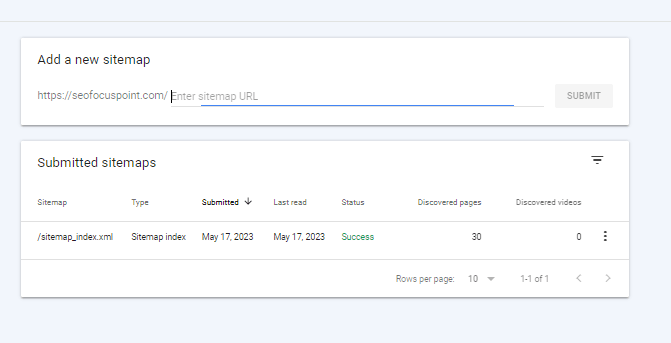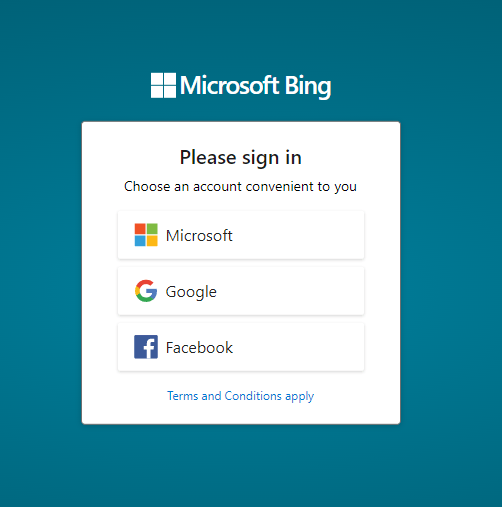Unlock the full potential of your website with our expert guide to mastering search engine submission. Discover the tips and tricks you need to maximize your online visibility and dominate the web!
In today’s digital age, having a website alone is not enough to succeed. With millions of websites on the internet, it’s crucial to make sure that your website is easily discoverable by search engines like Google, Bing, and Yahoo. This is where search engine submission comes in – by submitting your website’s URL to search engines, you increase your chances of appearing in search results and reaching your target audience. In this post, we’ll walk you through the essential strategies and techniques for mastering search engine submission and maximizing your online visibility. Let’s get started!
Table of Contents
What are search engine submissions?
Search engine submission refers to the process of submitting a website’s URL to search engines like Google, Bing, and Yahoo. By doing so, website owners can notify search engines that their site exists and request to be included in their index. This increases the chances of their website appearing in search results, making it more visible to potential visitors.
Search engine submission is a critical aspect of search engine optimization (SEO) because it enables search engines to find and crawl a website’s pages more efficiently. Without submission, it can take longer for search engines to discover new websites or updates to existing ones, which can result in lower rankings and reduced visibility.
Submitting a website to search engines is a simple process that typically involves filling out a form with the website’s URL and some basic information about the site. Some search engines also offer webmaster tools that allow site owners to monitor their website’s performance and make adjustments to improve their search engine ranking.
While search engine submission is just one aspect of SEO, it is an essential step in maximizing a website’s online visibility and reaching a broader audience. With the right techniques and strategies, website owners can master search engine submission and increase their chances of success in the online marketplace.
Is search engine submission necessary?
Search engine submission is not as necessary as it used to be in the past. In the early days of the internet, search engines relied heavily on website submissions to discover and index new websites. However, with the advancement of technology and the development of sophisticated algorithms, search engines can now discover new websites on their own through various methods, such as crawling links from other websites or through social media.
That said, search engine submission can still be a helpful tool for website owners to increase their website’s visibility and accelerate the indexing process. By submitting a website’s URL to search engines, website owners can ensure that search engines crawl and index their site in a timely manner. This is especially useful for new websites or for websites with low traffic, as they may not be discovered by search engines as quickly as more established sites.
Furthermore, search engine submission can also be useful for sites with regularly updated content, as submitting new pages or updates to search engines can help ensure that they are indexed quickly and accurately.
In summary, while search engine submission is not as necessary as it once was, it can still be a helpful tool for website owners looking to increase their website’s visibility and accelerate the indexing process. With the right strategies and techniques, website owners can master search engine submissions and maximize their online presence.
Importance of search engine submission for maximizing online visibility
Search engine submission is an important aspect of search engine optimization (SEO) and plays a crucial role in maximizing online visibility. Here are some reasons why search engine submission is important for website owners:
Increased visibility
By submitting your website to search engines, you increase your chances of being discovered by potential visitors who are searching for information related to your site. This can help increase your website’s visibility in search engine results pages (SERPs) and drive more traffic to your site.
Faster indexing
Search engine submission can help ensure that search engines discover and index your website’s pages quickly. This is especially important for new websites or for websites with low traffic, as they may not be discovered by search engines as quickly as more established sites.
Improved SEO
Submitting your website to search engines is just one aspect of SEO, but it can have a significant impact on your overall search engine ranking. By following best practices for search engine submission, you can improve your website’s crawlability and ensure that search engines can properly index your site.
Better user experience
When your website is properly indexed by search engines, it can make it easier for visitors to find the information they need on your site. This can help improve the user experience and keep visitors on your site for longer, which can lead to increased engagement and conversions.
How do you submit your website to search engines?
Submitting your website to search engines can help increase your website’s visibility and improve your search engine rankings. Here are the steps to submit your website to the most popular search engines:
1. Google

- Go to Google Search Console (formerly known as Google Webmaster Tools) and sign in or create an account by Clicking Start Now Button.

- Enter your website’s URL and Click the Continue Button.

- Verify that you own the website by following the instructions provided by Google. You have to copy a verification code and it should be added as a TXT record from your domain panel, to verify the ownership of your Domain. Then click VERIFY button to continue.

- Once your website is verified, click on “Sitemaps” and submit your website’s sitemap URL to Google.
2. Bing

- Go to Bing Webmaster Tools and sign in to Bing with one of three platforms; Microsoft, Google, or Facebook. You can choose whatever you want.

- Click on Add or you may Import from Google Search Console and enter your website’s URL.

- Verify that you own the website by following the instructions provided by Bing.
- Once your website is verified, click on “Configure My Site” and submit your website’s sitemap if you have one.
3. Yahoo
- Go to Yahoo Site Explorer and sign in or create an account if you haven’t already.
- Enter your website’s URL and click on “Add My Site.”
- Verify that you own the website by following the instructions provided by Yahoo.
- Once your website is verified, submit your website’s sitemap if you have one.
4. Yandex
- Go to the Yandex Webmaster page and sign in or create an account if you haven’t already.
- Click on “Add Site” and enter your website’s URL.
- Verify that you own the website by following the instructions provided by Yandex.
- Once your website is verified, click on “Indexing” and submit your website’s sitemap if you have one.
5. Baidu
- Go to the Baidu Webmaster Tools page and sign in or create an account if you haven’t already.
- Click on “Site Management” and enter your website’s URL.
- Verify that you own the website by following the instructions provided by Baidu.
- Once your website is verified, click on “Site Map” and submit your website’s sitemap if you have one.
6. DuckDuckGo
- DuckDuckGo is a privacy-focused search engine that doesn’t have a formal submission process.
- However, you can ensure that your website is discoverable on DuckDuckGo by following best practices for SEO and ensuring that your website is properly indexed by other search engines.
7. AOL
- Go to the AOL Search Submit page and sign in or create an account if you haven’t already.
- Enter your website’s URL and select the appropriate category.
- Choose a plan and make a payment if necessary.
- Once your website is submitted, it will be reviewed by AOL and potentially included in their search results.
8. ASK.com
- Go to the ASK.com Submit Your Site page.
- Enter your website’s URL and click on “Submit.”
- Once your website is submitted, it will be reviewed by ASK.com and potentially included in their search results.
9. Excite
- Go to the Excite Submit Your Site page.
- Enter your website’s URL and click on “Submit.”
- Once your website is submitted, it will be reviewed by Excite and potentially included in their search results.
It’s important to note that not all search engines have a formal submission process, and some may discover your website through other means such as backlinks. Additionally, submitting your website to search engines does not guarantee inclusion in search results or improved search engine rankings. It’s important to follow best practices for SEO and ensure that your website is properly optimized for search engines to maximize your chances of success.
Methods of Search Engine Submission
There are three main methods for submitting your website to search engines: manual submission, automated submission, and XML sitemap submission.
Manual Submission
Manual submission involves visiting each search engine’s website and submitting your website’s URL and other information manually. This method can be time-consuming, but it allows you to customize your submission for each search engine and ensure that your website is submitted correctly. Some search engines also require manual submission to verify that you are the website’s owner.
Here are the steps to manually submit your website to search engines:
- Identify the search engines you want to submit your website to. The major search engines include Google, Bing, and Yahoo, but there are also many smaller search engines and directories that you may want to consider.
- Create a list of the search engines you want to submit your website to and visit each search engine’s website.
- Look for the “Submit URL” or “Add URL” link on each search engine’s website. This link is usually located in the footer or the webmaster tools section of the search engine’s website.
- Click on the “Submit URL” or “Add URL” link and enter your website’s URL and other information, such as the website’s title, description, and keywords.
- Follow the instructions provided by each search engine to complete the submission process. Some search engines may require you to verify ownership of your website before submitting it.
- Monitor the status of your submission. Most search engines will provide a confirmation message after you submit your website, but it’s a good idea to check back periodically to ensure that your website is being indexed correctly.
While manual submission can be time-consuming, it allows you to customize your submission for each search engine and ensure that your website is submitted correctly. It’s a good practice to submit your website to search engines manually, especially if you’re targeting a specific audience or niche.
Automated Submission
Automated submission involves using software or services that automatically submit your website to multiple search engines at once. This method is faster than manual submission, but it may not allow you to customize your submission for each search engine. Some search engines also discourage or penalize automated submission because it can be associated with spamming.
XML Sitemap Submission
XML sitemap submission involves creating a sitemap of your website’s pages in XML format and submitting it to search engines. This method allows search engines to crawl and index your website more efficiently, as it provides a roadmap of all the pages on your website. Most search engines support XML sitemap submission, and it can be a good complement to manual or automated submission. Check out our article Technical SEO Checklist 2023 to get details ideas about XML Sitemap.
Submitting an XML sitemap to search engines can improve your website’s indexing and crawling efficiency. It provides search engines with a roadmap of your website’s pages and can help ensure that all pages are crawled and indexed correctly.
Here are the steps to submit an XML sitemap to search engines:
- Create an XML sitemap of your website’s pages. You can use online tools or plugins to generate an XML sitemap automatically.WordPress plugin Yeost and Rank Math Create sitemap XML automatically. You can also create a sitemap.xml file by Onlne Tools.
- Verify your website with each search engine. Most search engines require website owners to verify ownership before submitting an XML sitemap. This is done by adding a code snippet or a meta tag to your website’s header.
- Submit your XML sitemap to each search engine’s webmaster tools. This can be done through the search engine’s dashboard or webmaster tools. Most major search engines, including Google, Bing, and Yahoo, support XML sitemap submission.
- Monitor the status of your XML sitemap. Most search engines provide reports on the status of your XML sitemap, including the number of pages indexed and any errors encountered. You should monitor these reports regularly to ensure that your website is being indexed correctly.
Submitting an XML sitemap is an effective way to ensure that your website is indexed and crawled efficiently by search engines. It can also help improve your website’s visibility in search results.
Pros and Cons of XML sitemap submission
Here are the pros and cons of XML sitemap submission:
Pros:
- Improved Crawling and Indexing: By submitting an XML sitemap to search engines, you can provide them with a map of your website’s structure, which can help improve the crawling and indexing of your website’s pages.
- Faster Indexing: Submitting an XML sitemap can help search engines find and index new pages on your website faster, which can help improve your website’s visibility in search results.
- Better Crawl Coverage: An XML sitemap can help search engines find pages on your website that may not be easily discovered through traditional crawling methods.
- Increased Control: XML sitemaps provide you with greater control over how your website is indexed and crawled by search engines, allowing you to prioritize certain pages or exclude pages that you don’t want to be indexed.
Cons:
- Not a Guarantee: Submitting an XML sitemap is not a guarantee that all of your website’s pages will be indexed or that your website will rank higher in search results.
- Requires Maintenance: XML sitemaps require maintenance to ensure that they are up-to-date and accurate, especially if your website changes frequently.
- Can Be Time-Consuming: Creating an XML sitemap can be time-consuming, especially if you have a large website with many pages.
Overall, the benefits of XML sitemap submission outweigh the cons. While it’s not a guarantee that all of your website’s pages will be indexed or that your website will rank higher in search results, it can certainly improve your website’s crawling and indexing efficiency and help your website appear in search results faster.
Conclusion
Search engine submission is an essential step for improving your website’s online visibility. By submitting your website to search engines, you increase the chances of your website being discovered by users who are looking for the products or services that you offer.
Search engine submission also helps improve your website’s indexing and crawling efficiency, which can result in higher search engine rankings and increased organic traffic.
Submitting your website to niche search engines can also help you reach a more targeted audience and drive more qualified traffic to your website.
If you’re looking to improve your website’s online visibility, it’s essential to implement the tips and strategies discussed in this post. By submitting your website to search engines, creating an XML sitemap, and optimizing your website for search engines, you can increase the chances of your website being discovered by potential customers and drive more organic traffic to your website.
Don’t overlook the importance of search engine submission in your online marketing strategy. Take action today and start submitting your website to search engines, creating an XML sitemap, and optimizing your website for search engines. With a little effort, you can improve your website’s online visibility and attract more visitors to your website, ultimately resulting in increased sales and revenue for your business.
You Can Subscribe to Our Newsletter to get updated tips and tricks on SEO & Latest Link-building Methods.

